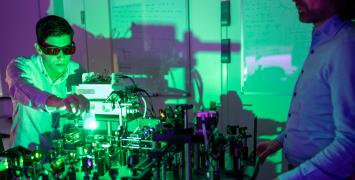New method developed to study mechanical proteins linked to muscular disorders

A team of scientists at CNIC, led by ERC grantee Jorge Alegre-Cebollada, have developed a method known as TEVs-TTN for examining the mechanical roles of specific proteins. This approach involves the controlled cleavage of proteins, allowing researchers to investigate the effects of impaired force transmission within muscle cells. The study contributes to ongoing efforts to understand the mechanisms underlying certain muscular diseases.
Published in Nature Biomedical Engineering, the research demonstrates that disruption of mechanical force transmission by the protein titin leads to muscle pathology. Titin, named after the Titans of Greek mythology, is the largest known protein in animals and serves a structural function in sarcomeres, the contractile units of muscle cells. Mutations in the TTN gene, which encodes titin, are a common cause of congenital muscular disorders and cardiomyopathies.
‘Many of these mutations generate a prematurely truncated form of the protein, impeding its correct anchoring in the sarcomeres and disrupting muscle function,’ explains first author Dr Roberto Silva-Rojas.
Using the TEVs-TTN system, the CNIC team was able to reproduce structural and functional changes in muscle cells similar to those observed in patients with titin-related conditions. According to Silva-Rojas, ‘muscles with cleaved titin show similar defects to those observed in patients, including cell-volume reduction, nuclear internalisation, mitochondrial aggregation, and interstitial fibrosis.’
‘In the absence of experimental animal models with titin-cleavage mutations, our approach allows a structured and targeted analysis of the impact of these types of alterations. This makes TEVs-TTN an ideal tool for testing therapies designed to mitigate the effects of impaired sarcomere integrity,’ he adds.
One of the study’s observations was that titin cleavage led to the complete disintegration of sarcomeres over a few days. Despite this, the muscle cells remained viable. The researchers suggest that similar cellular processes may occur in other scenarios, including muscle injuries, heart failure or chemotherapy-induced cardiotoxicity.
The CNIC team notes that while titin is essential for force transmission in sarcomeres, other proteins such as dystrophin, dystroglycan complexes, integrins, and lamins are also involved in maintaining structural integrity and signalling in muscle and other tissues. The TEVs-TTN method could be used in future work to explore the functions of these proteins and their potential involvement in disease.





